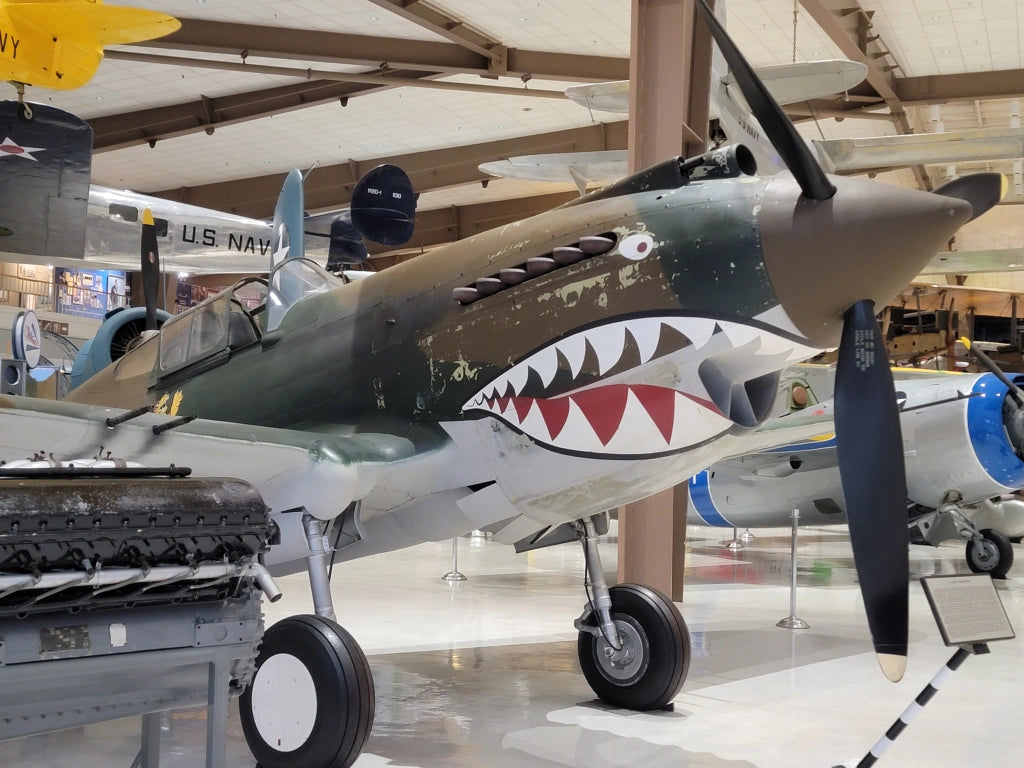Throughout military history and aviation, few legacies run as deep and influential as that of Claire and John Chennault. This father and son duo have etched their names in the chronicles of air combat, demonstrating not just skill but also the progression of aerial warfare over the course of their lifetimes.
Claire Lee Chennault: A Maverick in the Skies
Claire Lee Chennault, the elder of the two, first made an indelible mark on aviation history. Born in 1893, Claire’s initial foray into the military world was as a World War I pilot, but his real claim to fame would manifest in the skies of World War II. As the mastermind behind the creation of the American Volunteer Group – better known as the “Flying Tigers,” a group of volunteer American pilots that assisted China in its defense against Japanese aggression before the United States’ official involvement in the war, Chennault demonstrated unconventional tactics that often flew in the face of traditional military thinking. Yet, his results spoke for themselves.
His “Flying Tigers” became synonymous with their shark-faced P-40 fighters, symbolic of their fierce prowess and innovation. Claire’s advocacy for ‘defensive pursuit,’ which involved waiting for the enemy rather than actively seeking them out, and his belief in the paramount importance of ground-to-air communication made him somewhat controversial. However, these tactics proved incredibly successful in combat and deeply influenced future generations of pilots and air supremacy doctrine.
John Chennault: A New Rendition of the Tigershark
Lt. Col. John Chennault, Claire’s son, carried forward his father’s pioneering spirit in the realm of military aviation. John commanded the 343rd Fighter Group based in Alaska in 1942 – known as the “Aluetian Tigers” – with modified shark faces emboldened on the noses of their P-40 Warhawks. In a baren and small outpost on the edge of the Pacific, the 343rd was tasked with eliminating the Japanese from the Attu and Kiska islands in the western Aluetians. It was the first time since the war of 1812 that the United States mainland had been invaded by a foreign enemy. In May of 1943, the Japanese lost their foothold on Attu in a fierce battle and by August, they had withdrawn from Kiska completely.
Under his command, the 343rd Pursuit Group showcased remarkable effectiveness and innovation in air combat, embodying the same spirit of adaptability and tactical ingenuity his father had demonstrated. John’s leadership in this crucial period of aviation history reinforced the Chennault family’s legacy in military aviation, emphasizing the continued evolution of air combat tactics and strategy.
Legacy in Modern Aviation
The legacies of Claire and John Chennault extend beyond their respective wars. Today, as we stand at the cusp of an era defined by drone warfare, autonomous aircraft, and cyber warfare, the principles these two men introduced remain pivotal. Ground-to-air coordination, precision strikes, and the value of reconnaissance and forward control — all concepts they championed — remain central tenets in modern airpower doctrine.
When we reflect upon the evolution of air combat over the 20th century, it’s hard to find a father-son pair as influential as Claire and John Chennault. Their respective contributions in different wars and eras encapsulate the spirit of adaptability, innovation, and unwavering commitment to excellence. They serve as a testament to the continuous evolution of military strategy and aviation, reminding us of the men behind the machines and the legacies they leave behind.
For more insights into the P-40 Warhawk and other important military aircraft, visit Aces In Action. Here, you’ll find an amazing piece of artwork by Craig Tinder titled “Alaskan Tigers,” which depicts General Chennault’s son, Col. John ‘Jack’ Chennault protecting the Aleutian Islands from Japanese invasion. The limited edition canvas print even includes a piece of Intake fragment of a P-40 Warhawk discovered nearly 40 km from Murmansk, Russia, on the western side of Kola Bay.
Alaskan Tigers – P-40 Warhawk Fighter Aviation Art by Craig Tinder
The P-40’s legacy is closely coupled with General Claire Lee Chennault’s American Volunteer Group (AVG), otherwise known as the Flying Tigers. Chennault trained his crews to exploit the strengths of the P-40 to fight the Japanese – dive from high altitudes and attack. General Chennault’s son, Col. John ‘Jack’ Chennault would use many of the same tactics while protecting Alaska’s Aleutian Islands from Japanese invasion. Painted in a modified “shark-mouth” paint scheme, the 343rd Pursuit Group would defend the U.S. mainland from attack from mid-1942 to fall 1943.






Share:
Luftwaffe Aces: A Comparative Analysis of Priller and Other Notable Figures of the German Air Force
Tuck in the Battle of Britain: A Deep Dive into His Significant Role and Experiences during this Pivotal Moment in World War II